table of contents:
Sewing machine bobbins are crucial little parts, but a bobbin problem can quickly cause major malfunctions. Whether it's tangled threads, uneven stitches, or frequent jams, bobbin problems are a common source of frustration for sewers of all skill levels.
Fortunately, most of these issues have simple solutions. This article explores common bobbin challenges and guides you through adjustments and techniques that will help you get back to smooth, snag-free sewing.
Understanding the Bobbin and Its Crucial Role in Your Sewing Machine
The sewing machine bobbin is a small spool that stores the lower thread. It works in tandem with the upper thread to create strong stitches. A sewing machine bobbin problem often occurs when the tension isn't precisely adjusted, resulting in tangled threads, uneven stitches, or even a complete jam. In short, the bobbin is the hidden soul of your sewing projects.
Are you using a Juki, Janome, or Elna machine ? Bobbins are available in metal or plastic . Each model has its own preferences, and an incompatible bobbin can cause a messy sewing machine bobbin case or damage the bobbin case.
In addition, a poor choice of sewing machine thread (too thick, too stiff or of poor quality) can accentuate these malfunctions and hinder the smooth running of the sewing.
Therefore, it's best to check compatibility before purchasing a product. Metal is more resistant to wear, while plastic is suitable for lightweight models. Your choice will affect the quality of your sewing projects.
Some problems require the intervention of a professional , do not hesitate to contact Verotex for a quick and efficient repair of your sewing machine, overlocker and coverstitch machine.

|
Main Symptoms and Causes of Sewing Machine Bobbin Problems |
||
|
Symptom |
Probable cause |
Impact on sewing |
|
Thread tangled under the fabric |
Bobbin tension problem |
Unsightly thread grip and poorly formed stitches |
|
Irregular or skipped stitches |
Bobbin not inserted correctly or incorrect tension |
Weak seams and uneven appearance |
|
Machine blockage |
Defective or dirty bobbin case |
Unable to continue sewing |
|
Thread jam |
Tension problem or unsuitable bobbin |
Machine stops abruptly and threads get stuck |
|
Accumulation of fluff |
Insufficient cleaning of the bobbin compartment |
Progressive malfunction and degraded sewing quality |
|
Frequent thread breakage |
Excessive tension or poor quality thread |
Frequent interruptions and frustration |
|
Persistent irregular spots |
Improperly installed housing or unsuitable bobbin |
Uneven work and touch-ups required |
|
Machine that slips or forces |
Misaligned bobbin or damaged case |
Risk of damaging the machine or fabric |
If you notice tangled threads under the fabric, skipped stitches, or unusual mechanical noises, this is a sign that a bobbin problem is developing. You need to address this issue quickly to avoid costly repairs.
Ignoring these signs can lead to serious damage. Your sewing machine's mechanism may be suffering from a clogged bobbin case or an improperly adjusted bobbin. Without action, individual parts will wear out prematurely. You must perform regular maintenance on the case to save your machine from repeated breakdowns.
Effective Solutions to Common Can Problems
Experiencing a bobbin problem can quickly interrupt your work and cause frustration. Whether it's improperly adjusted thread tension, a jam, improper installation, or a dirty bobbin case, these issues are common but always fixable. Discover our effective solutions for adjusting tension, unblocking tangled threads, choosing the right bobbin , and maintaining your machine for smooth, snag-free sewing.
Bobbin Thread Tension Problems: How to Adjust Them
Balanced tension between the bobbin and upper threads is the key to a perfect stitch . A sewing machine bobbin problem often occurs when this tension is incorrectly adjusted: too loose, and the lower thread forms loops under the fabric; too tight, and it breaks or distorts the fabric. Adjusting this tension requires a little skill, but it's within your reach!
- Locate the tension screw on the bobbin case of your Singer, Brother or Pfaff sewing machine.
- Use a small screwdriver to adjust the tension: tighten, loosen .
- Test on a piece of fabric to check that the bobbin thread tension is balanced with the top thread .
- Consult your sewing machine manual for recommended settings based on the type of thread and needle used.
- Clean the bobbin case regularly to prevent lint buildup that disrupts tension.
Check your adjustment by sewing on a swatch of fabric similar to your project. The bobbin thread should wind effortlessly with the upper thread, without forming a loop or a tight stitch. Pay careful attention to the adjustment, as an incorrect setting can quickly become a sewing machine bobbin problem.
Precise control is even more important if you are using a semi-professional sewing machine . The performance of this machine requires optimal adjustment. This adjustment guarantees consistent stitches on all types of fabrics, whether nylon, tartan or cotton.
Request a quick quote from Verotex for efficient repairs if your sewing machine malfunctions. Our qualified technicians are ready to bring your creative tools back to life.

Wire jams and tangling: unblocking the situation
Thread stuck in the bobbin case is a common sewing machine bobbin problem, often caused by improperly adjusted tension or excessive dirt. Lint buildup slows the thread , while poor quality thread frays easily.
To avoid damaging the mechanism, gently free any stuck threads by removing the bobbin, cleaning the bobbin case, and using a soft brush. Also, check that the thread slides freely in the guides, especially on some specific models . Finally, test a stitch before continuing your work.
Incorrectly installed or incompatible can: find the right solution
A plastic bobbin in a machine that requires metal? A reversed assembly? These errors often cause bobbin problems, resulting in skipped stitches or jams. An unsuitable bobbin strains the mechanism and impairs the quality of your stitching. Regular sewing machine servicing can detect this type of incompatibility before it causes lasting damage to your equipment.
Insert the bobbin following the direction indicated on the bobbin case (usually arrowed). For special models, such as Janome, make sure it turns freely without excessive play. A bobbin that is too loose or too tight will interfere with the thread feed .
Cleaning and maintaining the bobbin case
A dirty bobbin case is a common cause of sewing machine bobbin problems, as it slows down the bobbin's rotation and causes jams. To prevent this, clean it after every project, especially if you're using fluffy fabrics. Regular maintenance will help extend the life of your sewing machine.
Use a fine brush, a soft cloth, and dry air to remove residue. Avoid harsh products or sharp tools that could damage your sewing machine. For models with a horizontal housing, open them fully to access the nooks and crannies. Store your machine in a clean area to limit buildup.
|
Comparison of bobbin types (metal vs. plastic) and their compatibility with major sewing machine brands |
|||
|
Can type |
Benefits |
Disadvantages |
Compatibility |
|
Metal cans |
Superior durability, |
Higher weight, |
All machines accepting metal bobbins (Singer, Pfaff, Brother) |
|
Plastic cans |
Lightness, silent, |
Wear out faster, |
Recent models from Juki, Janome |
|
Universal cans |
Good economical alternative, |
Risk of rough adjustment, |
Occasional use, |
Can't decide between plastic and metal bobbins? Prioritize compatibility with your model to avoid any sewing machine bobbin problems related to improper tension or untimely breakage. Before choosing a model, check your owner's manual for recommended sizes.
Metal withstands heavy use and is perfect for long seams or thick fabrics. It is also more suitable for high-powered sewing machines , which put more stress on the components.
Plastic, on the other hand, is quieter and suitable for light-duty work. Beware of universal bobbins: while convenient for stockpiling, they can cause sewing machine bobbin problems and affect quality. Your choice will affect the overall cost of your supplies and the length of time they last before needing replacement.

Preventing Future Sewing Machine Bobbin Problems
To avoid any sewing machine bobbin problems, regular maintenance of the bobbin area is essential. Adopting a simple and effective routine helps prevent malfunctions. Additionally, choosing the right thread and mastering proper threading are key steps to ensuring optimal operation of your machine. Here's how these good habits protect your equipment over the long term.
Regular maintenance of the can area: a simple and effective routine
You can avoid many problems by anticipating any sewing machine bobbin problems through regular maintenance of the bobbin case. Indeed, the accumulation of lint disrupts the thread flow and risks damaging individual parts.
The surest way to avoid this problem is to regularly clean the area around the bobbin to minimize the risk of jams or uneven stitches. This will extend the life of your sewing machine.
Establish a monthly routine: Use a fine brush to remove residue, a dry cloth to dust, and compressed air to reach difficult corners. Storing your machine in a dry place helps prevent bobbin problems and ensures smooth bobbin operation.
Does your machine need an upgrade? Simply contact the professionals at Verotex.
Thread selection and correct threading
Choosing the right thread can help avoid many problems, including bobbin problems with your sewing machine. A thread that's too thick can increase tension, while a thread that's too brittle can break easily or cause jams. Choose a quality thread that's suited to the type of fabric and your sewing machine.
Thread the bobbin correctly according to the diagram in the user manual. A poorly guided bobbin case can cause bobbin problems, such as skipped stitches or unexpected breakages. Always remember to test a swatch before sewing to check the tension. For consistent stitches and a successful project , install the bobbin correctly and use the correct thread.
Both plastic and metal bobbins make your sewing machine tick. Remember three things: clean the bobbin case regularly, adjust the bobbin thread tension, and choose the right bobbins for your machine. A little care can help prevent jams , tangled threads, and dropped stitches . Your next project deserves a well-adjusted bobbin!
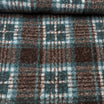



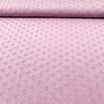
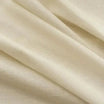





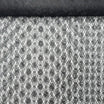

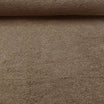

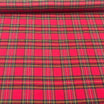




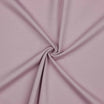
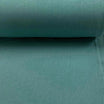

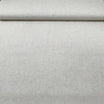

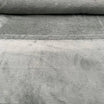
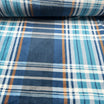

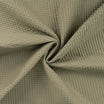








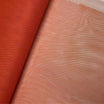

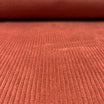
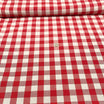



Leave a comment
All comments are moderated before being published.
This site is protected by hCaptcha and the hCaptcha Privacy Policy and Terms of Service apply.